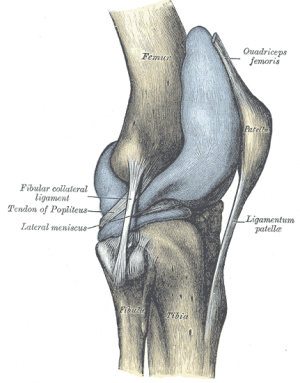Patellar Apprehension Sign
Original Editor - Alan Jit Ho Mak Top Contributors - Alan Jit Ho Mak, Agoro Bukola Zainab, Rachael Lowe, Admin, Kim Jackson, Amanda Ager and George Prudden
Description[edit | edit source]
Patellar apprehension sign is a physical finding in which forced lateral displacement of the patella produces anxiety and resistance in patients with a history of lateral patellar instability.[1]
Technique[edit | edit source]
Clinician will instruct the patient to positioned in supine or sitting on the bench with his/her knee flexed to 30 degrees. The quadriceps should be relaxed to allow passive movements of the patella. The clinician will perform this technique by using the thumb of both hands, and press on the medial side of the patella of the patient.
If the test is positive, take notice of the patient's face, as he/she maybe surprised by the amount of lateral displacement of the patella, and may feel uncomfortable or apprehensive, as the patella reaches the maximal lateral displacement. The patient may even reach for the clinician hands or attempt to straighten his/her knee in an attempt to pull the patella back to the relative normal position.
Evidence[edit | edit source]
See Moving Patellar Apprehension Test
References[edit | edit source]
- ↑ Ahmad CS, McCarthy M, Gomez JA, Shubin Stein BE. The moving patellar apprehension test for lateral patellar instability. The American journal of sports medicine. 2009 Apr;37(4):791-6.
- ↑ }}<ref>Patellar Apprehension Test Available from: http://www.youtube.com/watch?v= bqysF7bzpnM [last accessed 18/10/2020]







